Results 3,911 to 3,920 of 12096
Thread: Anandtech News
-
05-27-14, 06:30 PM #3911
Anandtech: Toshiba Launches Six New Intel Tablets and Laptops, Including $110 Android
Today Toshiba announced a suite of six new Intel powered tablets and laptops, ranging from an ultra-affordable Android Tablet to a Yoga like Ultrabook.
Starting with the first tablet, Toshiba launched a 7” Android 4.4 tablet called the Excite Go. This small form tablet is decidedly low end, but also comes with a low end price tag of only $109.99. Powered by a quad-core Intel Atom, it has a 1024x600 display, weighs in at less than a pound (354 grams) and comes styled in a Satin Gold finish. This tablet is expected to be available early July.
Gallery: Excite Go

The next two tablets announced are running Windows 8.1 – and right after Microsoft announced Windows 8.1 with Bing, we see the result of this new SKU with the two tablets being far less expensive than previous versions. The new Encore 2 branded tablets come in both 8 and 10.1” sizes and also are powered by quad-core Intel Atom processors but step up from the Android device with a modest increase in resolution – 1280x800 – for both of the Encore 2 devices. Also included is Micro HDMI and microSD support for adding an additional 128 GB of storage over the optional 64 GB internal NAND. As with the Android tablet, the finish is again Satin Gold, with prices starting at $199.99 for the 8” and $269.99 for the 10” version with availability in early July.
Gallery: Encore Tablets





Next up were a pair of 2-in-1 laptops with detachable keyboards branded as the Satellite Click 2 and Satellite Click 2 Pro. The Click 2 features a 13.3” 1366x768 display, a quad-core Intel Pentium Processor, and a 500 GB hard drive. Networking is provided by 802.11ac, which is nice to see becoming a standard even on lower priced devices. At 0.9” thick including keyboard, it’s not as thin as some of the more expensive devices out there, but that can be forgiven somewhat with the MSRP of $586.99. Toshiba is touting their quick-release latching mechanism for easy removal of the keyboard base, and the Click 2 is one of Toshiba’s first devices to have an audio system tuned by Skullcandy and DTS – obviously we’re not sure if the tuning was for accuracy or to improve bass response, and will have to wait for shipping devices to be tested to see if this is any sort of improvement. Toshiba expects this device to begin shipping in June.
Gallery: Satellite Click 2


The Click 2 Pro keeps the 13.3” screen but bumps the resolution up to 1920x1080. Also added are front and rear cameras, and a push-pull hinge mechanism which allows the screen to be attached and detached with a single hand. The chassis is anodized brushed aluminum and shrinks from 0.9” of the Click 2 to 0.78” including keyboard on the Pro. 802.11ac Wi-Fi is also standard as well as microSD, Micro HDMI, and Micro USB 2.0 ports. The keyboard on this version has backlit keys, two additional USB 3.0 ports, and an optional keyboard with both a secondary battery as well as an additional 500 GB hard drive to go with the 128 GB SSD of the tablet. The Pro is powered by a Haswell Core processor and features Harmon Kardon sound. The MSRP starts at $1028.99, and the optional base with battery and hard drive bump the price up to $1279.99. Availability is also late June.
Gallery: Satellite Click 2 Pro


Finally, the Satellite Radius multimode laptop was introduced. This device features a 360° flip and fold hinge much like the Lenovo Yoga series. The display is a 15.6” 1920x1080 touchscreen. The chassis is brushed aluminum with Harmon Kardon speakers and DTS Sound audio processing. The device comes with either an i5 or i7 CPU, 8 GB of memory, and up to 1 TB of storage. 802.11ac Wi-Fi is standard, and there is a HDMI port capable of 4k output as well as three USB 3.0 ports and dual-array microphones. There is also a large range of sensors normally found in tablets, such as an accelerometer, gyroscope, compass, and of course the ambient light sensor. MSRP starts at $925.99 with availability in early June.
Gallery: Satellite Radius





Unfortunately, Toshiba has not yet provided full specifications for these devices.Toshiba Devices Excite Go Encore 8 Encore 10 Click 2 Click 2 Pro Radius Display 7" 1024x600 8" 1280x800 10.1" 1280x800 13.3" 1366x768 13.3" 1920x1080 15.6" 1920x1080 CPU quad-core Atom quad-core Atom quad-core Atom quad-core Pentium Haswell Core Haswell Core i5/i7 Storage up to 16 GB up to 64 GB up to 64 GB 500 GB (HDD) 128 GB SSD + optional 500 GB (HDD) up to 1 TB Price (Starting) $109.99 $199.99 $269.99 $586.99 $1028.99 $925.99
More...
-
05-27-14, 07:00 PM #3912
Anandtech: Humble Bundle Returns: PC and Android 10
I’ll be honest: I’m really glad the “14 days of bundles” is over, as what started as something potentially interesting eventually became a series of mediocre bundles. I did buy a few of them, I haven’t played most of the games, and I don’t know if the net result was better (in terms of donations) than the regular Humble Bundles; I just know I got tired of daily changes. So, I’m happy to see a “return to their roots” bundle for the next two weeks, consisting of eight games right now, with additional titles coming next Tuesday. The list this time is interesting in that all of the games are for both PCs and Android devices; what’s more, all of the games are (or at least will be) available in DRM-free versions for Linux, OS X, and Windows, and Steam versions are available for most of the games for Linux and OS X as well. The price has also returned to the usual “pay what you want” ($1 or more for Steam codes) and “beat the average” to unlock additional games. Here’s the list, starting with the standard bundle followed by the unlockable games, and since the games can be a very different experience on PCs as opposed to tablets, I’ll refer to both review scores for each game.
- Draw a Stickman: EPIC (~80% PC, 12/2013; ~83% tablet, 11/2012): a drawing game where you create your character, equipment, and other objects as you guide him through the game world.
- Galcon Fusion (68% PC, 02/2010; ~75% tablet, 03/2010): a multiplayer arcade/strategy game involving hordes of ships and planetary battles.
- Galcon Legends (N/A PC, 01/2014; 73% tablet, 02/2014): an update to the above game with some new content.
- Symphony (75% PC, 08/2012; N/A tablet): a rhythm/music game with Space Invaders gameplay; can use your own MP3 files.
- Skulls of the Shogun (72% PC, 07/2013; 93% tablet, 11/2013): a turn-based strategy game with a sense of humor, where you play as a samurai in the afterlife; beat the average donation to unlock.
- Metal Slug 3 (~66% PC, 02/2014; 76% tablet, 07/2012): a port of the classic Neo Geo arcade sidescroller; beat the average donation to unlock.
- Fieldrunners 2 (73% PC, 01/2013; 88% tablet, 07/2012): a classic tower defense game; beat the average donation to unlock.
- Breach and Clear (~60% PC, 03/2014; 66% tablet, 07/2013): a tactical strategy game where you control a group of special operatives taking down the proverbial bad guys; beat the average donation to unlock.
One interesting thing to note is that the tablet versions (iOS is linked above, though I assume the Android versions are essentially the same) scored universally higher than the PC version of the games. I don’t know if that’s a case of PC reviewers being more demanding and/or tablet reviewers being easier to please, or if the games are simply more enjoyable on mobile devices. The good news is that you get both PC and Android versions of all of the games, and you only have to pay for them once. The cost of most of these games is around $10, maybe a bit more, so beating the average price ($4.83) for eight games – plus any that get added to the bundle next Tuesday – is certainly a good deal. And as always, you can donate everything to charity (EFF or Child’s Play) if you so choose.
Gallery: Humble Bundle Returns: PC and Android 10





More...
-
05-27-14, 11:01 PM #3913
Anandtech: Quick Note - Steam Machines Delayed Until 2015
The concept of a Steam Box has been interesting from the beginning. Harness the power of a PC, include the expandability and upgradability, but keep the system simple and secure.
Unfortunately, that dream is slightly farther away at this point. Valve used their Steam Community page to post an update on the Steam Machine status:
"We've been getting emails from the Steam community asking us how our in-development Steam Machines are coming along. It's great that you're excited about it, and we know you appreciate it when we keep you in the loop on stuff like this, so we wanted to give you all a quick update.
We’re now using wireless prototype controllers to conduct live playtests, with everyone from industry professionals to die-hard gamers to casual gamers. It's generating a ton of useful feedback, and it means we'll be able to make the controller a lot better. Of course, it's also keeping us pretty busy making all those improvements. Realistically, we're now looking at a release window of 2015, not 2014.
Obviously we're just as eager as you are to get a Steam Machine in your hands. But our number one priority is making sure that when you do, you'll be getting the best gaming experience possible. We hope you'll be patient with us while we get there. Until then, we’ll continue to post updates as we have more stories to share."
The controllers are unlike anything seen on any previous console, so it’s not surprising they are generating a lot of feedback.
E3 is just around the corner, so hopefully there will be a more comprehensive update at that time.
Source: Valve via ArsTechnica
More...
-
05-28-14, 08:00 AM #3914
Anandtech: Netgear and ZyXEL Introduce Enterprise WLAN Controllers and Access Points
The enterprise Wi-Fi market is a hotly contested one with expensive offerings from companies such as Aruba Networks and Ruckus Wireless being the preferred choice of many IT administrators. Primary requirements for products in this market are the ability to support high client device densities and the provision of a robust and flexible management interface. Traditional consumer Wi-Fi vendors have also started expanding their offerings in this growing market segment. Last week, Netgear and ZyXEL introduced a few WLAN solutions targeting the enterprise space.
Netgear's ProSAFE lineup is quite popular in the SMB space, and the new wireless controller as well as the wall-mount access point are being marketed under this brand name. The newly introduced products include the ProSAFE WC600 wireless controller (with support for centralized management of all of Netgear's business-grade managed access points - single / dual-band and 2x2/3x3 solutions) and the ProSAFE WN370 wall mount access point with Power over Ethernet (PoE) capabilities.
The WC7600 can support up to 150 access points and licensing can be purchased in sets of 10 access points. The WN370 is a single-band 802.11n access point designed for in-room wired and wireless access. In addition to the wireless capabilities, the unit has a 1 Gbps uplink, 4x 100 Mbps Ethernet data ports and an additional voice port for VoIP digital phones. RF and power tuning, as well as wireless security, are handled by the WC7600 wireless controller. Netgear also has other dual-band standalone APs such as the WNDAP620 and WNDAP660 which can now be managed with the new wireless controller. Pricing for the WC7600 comes in at $3079 for 2 access point licenses. A license for 10 access points comes in at $1056. The WN370 access point will sell for $219.
ZyXEL is targeting the same market with the NCX5500 WLAN controller and the NWA5301-NJ PoE access point. The NCX5500 is priced a bit higher at $3399, but it also supports more access points (512, compared to 150 in the Netgear WC7600). While the NCX5500 has 6 GbE ports, the WC7600 has two 1/10G SFP+ ports for data uplink and a 1G RJ-45 port for management. ZyXEL implements specialized algorithms to maximize Wi-Fi availability as well as ensure spectrum utilization efficiency. The NWA5301-NJ is a single-band 2x2 802.11n access point priced at $139. It has a 100 Mbps uplink and three 100 Mbps downlink ports (one of which is PoE-capable and can be used for VoIP phones).
More...
-
05-28-14, 10:00 AM #3915
Anandtech: NVIDIA Releases GeForce GTX Titan Z
Back in March at GTC 2014, NVIDIA announced their forthcoming flagship dual-GPU video card, the GeForce GTX Titan Z. Based on a pair of fully enabled GK110 GPUs, NVIDIA was shooting to deliver around twice the performance of a single Titan Black in a single card form factor.
At the time of NVIDIA’s initial announcement GTX Titan Z was scheduled for release in April. April of course came and went with no official word from NVIDIA on why it was delayed, and now towards the tail end of May the card is finally up for release. To that end NVIDIA sent out a release a bit ago announcing the availability of the card, along with putting up the card's product page and confirming the final specifications of the card.
First and foremost, with NVIDIA initially holding back on publishing some of the specifications of the GTX Titan Z at its announcement in March, we now have the final two pieces of the puzzle: the card’s official GPU clockspeeds, and the TDP. Our earlier estimation of the core clock, based on NVIDIA’s performance figures, turned out to be correct, with the card shipping at 706MHz. Meanwhile the boost clock is revealed to be at 876MHz.GTX Titan Z GTX Titan Black GTX 780 Ti GTX Titan Stream Processors 2 x 2880 2880 2880 2688 Texture Units 2 x 240 240 240 224 ROPs 2 x 48 48 48 48 Core Clock 706MHz 889MHz 875MHz 837MHz Boost Clock 876MHz 980MHz 928MHz 876MHz Memory Clock 7GHz GDDR5 7GHz GDDR5 7GHz GDDR5 6GHz GDDR5 Memory Bus Width 2 x 384-bit 384-bit 384-bit 384-bit VRAM 2 x 6GB 6GB 3GB 6GB FP64 1/3 FP32 1/3 FP32 1/24 FP32 1/3 FP32 TDP 375W 250W 250W 250W Width Triple Slot Double Slot Double Slot Double Slot Transistor Count 2 x 7.1B 7.1B 7.1B 7.1B Manufacturing Process TSMC 28nm TSMC 28nm TSMC 28nm TSMC 28nm Launch Date 05/28/14 02/18/14 11/07/13 02/21/13 Launch Price $2999 $999 $699 $999
This makes for an especially large delta between the base and boost clocks – 170MHz – which is consistent with the TDP-constrained nature of this card. NVIDIA’s last dual-GPU card, GTX 690, also had a larger than average clock delta, so this is not unexpected though it is the widest delta we’ve seen yet. What this means is that it’s reasonable to assume that the performance of GTX Titan Z is going to be more TDP sensitive than on GTX Titan Black; in TDP-heavy scenarios the card is going to have to fall back more often, while in TDP-light scenarios it should still have the chance to perform near its maximum boost clock. Speaking of which NVIDIA doesn’t publish the maximum boost clock, so from these figures it’s reasonable to expect the GTX Titan Z to underperform the GTX Titan Black in SLI, but it’s not possible to tell how well peak performance will compare.
Meanwhile we also have a final confirmation on the card’s TDP. As we suspected back in March, NVIDIA has configured the card with a 375W TDP, putting the TDP roughly 50% higher than a single GTX Titan Black and indicating that along with a wider range of clockspeeds NVIDIA is aggressively binning GPUs for this part. This lower TDP means that while we expect GTX Titan Z to underperform GTX Titan Black in SLI, it looks like it should significantly undercut the latter’s power consumption, improving overall power efficiency.
Looking at the power delivery mechanism itself, NVIDIA has also sent over a shot of the bare board itself, along with a bit of information on how it’s configured. GTX Titan Z uses 12 power phases (split in half for each GPU), which as we can see mostly reside at the center of the card between the two GPUs. Delivering power to these VRMs is a pair of 8pin PCIe power sockets, which combined with the PCIe slot itself allow up to 375W to be pulled, the card’s TDP.
This 375W beast will in turn be cooled via a triple slot cooler, owing to the greater amount of heat to dissipate. Triple slot cards are commonly seen in high-end partner designs, but this mark the first time we’ve seen a triple slot card as a reference design. The triple slot design is also going to be notable since when coupled with the split-blower design of the cooler, it further increases the amount of space the card occupies. Axial fan designs such as the one used on GTX Titan Z need a PCIe slot’s worth of breathing room to operate, which means that altogether the GTX Titan Z is going to take up 4 slots of space. Which in turn is notable because it means that in principle GTX Titan Z won’t save on any space compared to GTX Titan Black in SLI; the latter uses a tried and true blower design that allows the cards to be used directly next to each other (though it’s not preferable), consuming 4 slots of space in an SLI configuration.
Moving on, today’s announcement also sees confirmation of the I/O port configuration and the number of displays supported for the card. NVIDIA’s specs say that GTX Titan Z will support up to 4 displays, indicating that all I/O ports are being routed through a single GPU. However NVIDIA’s port configuration is downright odd for a $3000 card: 1x DVI-I, 1x DVI-D, 1x DisplayPort, and 1x HDMI. This is admittedly us being picky, but the inclusion of the HDMI port in a $3000 card is genuinely odd. The DVI ports make sense in as much as they work with legacy DVI displays at a time when a DisplayPort-to-DL-DVI adapter is $100, but the HDMI port offers neither flexibility nor cost savings. Replacing the HDMI port with a second DisplayPort would grant the card far more flexibility – including driving a second 4K@60Hz monitor – all the while still allowing HDMI through a simple passive DisplayPort-to-HDMI adapter. But I digress…
As far as pricing and availability are concerned, as per NVIDIA’s initial announcement the GTX Titan Z is retailing at $2999 (ed: or about £2350 in the UK), making it NVIDIA’s most expensive GeForce card yet. We’ve seen announcements from MSI, Zotac, and EVGA so far, so it looks like a decent selection of NVIDIA’s partners will be selling the card, though it’s not clear at this time which regions each of those partners will be selling in. With the GTX Titan cards thus far, NVIDIA has only let a couple of partners sell the card since they’re selling identical low volume products. In any case availability is immediate, with Newegg already listing the EVGA card as in stock as of press time.
Of course it goes without saying that $3000 is going to be a steep price to pay for GTX Titan Z, both compared to the AMD and even the NVIDIA competition. A pair of GTX Titan Blacks would run for $2000, a full $1000 less, and as we discussed before the triple slot design of the GTX Titan Black doesn’t afford much in the way of space savings over dual slot cards. Which doesn’t mean we’re writing off GTX Titan Z – NVIDIA is many things, and diligent about their research is one of those – but it will be interesting to see what their end users and OEM/boutique builders do with the card. The benefits of GTX Titan Z over two single-GPU cards are not as cut-and-dry as with NVIDIA’s other dual-GPU cards, which means that it’s more of a lateral move than usual.
A big part of how GTX Titan Z is going to be used will in turn depend on who the buyer is. NVIDIA’s compute group is pushing GTX Titan Z as the ultimate compute card at the same time as their gaming group is pushing it as the ultimate gaming card, and like NVIDIA’s other Titan cards this product will be serving two masters. That said it’s clear from NVIDIA’s presentations and discussions with the company that they intend it to be a compute product first and foremost (a fate similar to GTX Titan Black), in which case this is going to be the single most powerful CUDA card NVIDIA has ever released. NVIDIA’s Kepler compute products have been received very well by buyers so far, including the previous Titan cards, so there’s ample evidence that this will continue with GTX Titan Z. At the end of the day the roughly 2.66 TFLOPS of double precision performance on a single card (more than some low-end supercomputers, we hear) is going to be a big deal, especially for users invested in NVIDIA’s CUDA ecosystem.
Gaming on the other hand looks to be murkier. Certainly GTX Titan Z can and will be used as a gaming card (expect to see this one popular in high-end boutique systems), but NVIDIA faces extremely stiff competition from AMD’s recently released Radeon R9 295X2, which at $1500 retails for half the price of GTX Titan Z. Given GTX Titan Z’s sub-Titan Black clockspeeds and higher price, NVIDIA faces an uphill battle here on price and performance, and it makes a lot of sense in light of this why GTX Titan Z is first and foremost a compute card. None the less, with NVIDIA controlling around 2/3rds of the discrete GPU market and GTX Titan Z consuming around 25% less power (on paper), we certainly expect it to appear in gaming systems, especially in builds where price is no object and two cards can be installed.
Gallery: NVIDIA GeForce GTX Titan Z





Wrapping things up, the launch of GTX Titan Z appears to be the capstone for Kepler’s career over at NVIDIA. While we will likely see rebadges and reconfigurations over the coming generations, with NVIDIA now shipping a dual-GPU GK110 card they have assembled virtually every Kepler combination possible. And for that they go out with a bang, while on the long term we turn our eyes towards NVIDIA’s new Maxwell architecture and what it might mean for the high-end once it makes its way into NVIDIA’s most powerful GPUs.
Spring 2014 GPU Pricing Comparison AMD Price NVIDIA $3000 GeForce GTX Titan Z Radeon R9 295X2 $1500 $1100 GeForce GTX Titan Black $650 GeForce GTX 780 Ti Radeon R9 290X $550 $500 GeForce GTX 780
More...
-
05-28-14, 11:30 AM #3916
Anandtech: Synology Introduces DS414slim with Marvell ARMADA 370
NAS units capable of only accepting 2.5" drives have been a rarity, but the launch of WD Red drives in that form factor has given a boost to vendors looking to cater to that space. Synology launched a 2.5"-drive only 4-bay NAS back in 2011 (DS411slim). This year, we have a refresh, the DS414slim.
The Synology OS (Disk Station Manager - DSM) has evolved into a very capable, user-friendly and feature-rich server OS in its own right. Its high-performance iSCSI features make it very attractive for virtual machines. The 414slim comes equipped with a very capable SoC (the Marvell ARMADA 370 running at 1.2 GHz, which we already saw in the LenovoEMC ix4-300d) and sports four hot-swappable drive bays, two USB 3.0 ports and two GbE links. Inside the system, we have 512 MB of DRAM. Since 2.5" drives don't consume a lot of power, the unit is able to do with a 30W external power adapter.
The small size of the system as well as the massive RAID-able storage capacity (4 x 1.5TB supported currently) and rich networking capabilities make it an ideal mini server for those experimenting with virtualization and have a space-constrained setup.
More...
-
05-29-14, 10:00 AM #3917
Anandtech: Seagate Acquires SandForce From Avago/LSI
Seagate has just announced that they will be acquiring LSI's Accelerated Solution Division and Flash Components Division from Avago, which translate to LSI's Nytro lineup along with the SSD controller focused SandForce. This announcement comes as a surprise because about six months ago, Avago announced that they will be acquiring LSI, so this sale comes only a few weeks after that acquisition was closed. Seagate will be paying Avago $450 million in cash and the transaction is expected to close in Q3'14.
For Seagate this deal is a steal. Back in 2011, LSI paid $370 million ($332m in cash and $48m in stock) for SandForce alone and now Seagate is getting LSI's flash accelerator business for only $80 million more. Since Seagate doesn't have any SSD controller technology, this acquisition is huge for them because so far they have been relying on third parties for controllers and NAND. Without controller IP, it's relatively hard to be competitive in the SSD market because you can't differentiate your product. With SandForce Seagate will be able to become a serious player in the SSD space and I'm sure one of the reasons why Seagate had to act quickly is WD's recent acquisitions in the SSD industry (STEC, Virident & VeloBit).
It makes sense from Avago's angle too. I've been hearing that LSI/Avago hasn't been very happy about the SF3700 delays, so that might explain why the price seems a bit low. I'm also thinking that Avago was never interested in LSI's flash business in the first place and that's why Avago decided to liquidate it so quickly after the acquisition.
At this point it's too early to say what this means to the SSD industry as a whole. SandForce's licensing model has been one of the corner stones for the industry as it has allowed OEMs with no controller or NAND technology to easily enter the market. The press release doesn't directly disclose whether Seagate will continue to license SandForce controllers to other OEMs but I'm fairly sure they will as Seagate expects the enterprise SSD and SSD controller lineup to generate at least $150 million in revenue next year.
All in all, this is certainly very interesting news. I'm trying to get in touch with Seagate/LSI to get more details about this acquisition and it's details, so stay tuned for more news and analysis.
More...
-
05-29-14, 10:30 AM #3918
Anandtech: JMicron JMF667H Reference Design (128GB & 256GB) Review
Back in 2008 and 2009, JMicron was a relatively big name in the SSD industry. Many OEMs were using their controllers as there weren't many alternatives and JMicron had very alluring pricing. However, as soon as SandForce entered the market in late 2009, JMicron faced issues. Their controllers had major problems with performance compared to SandForce, and that ultimately lead to many OEMs switching to SandForce's controllers. Now, five years later, JMicron is looking to make a comeback to the market with their new JMF667H SATA 6Gbps controller. We got reference design samples straight from JMicron with a brand new firmware, so read on to see how JMicron stands today!
More...
-
05-29-14, 11:30 AM #3919
Anandtech: AMD Posts Mantle Whitepaper
As part of a larger Mantle promotion, AMD has posted a number of blogs on their site detailing their low level API. The blog posts themselves are unabashedly closer to advertising than technical writing, but as something of a diamond in the rough AMD has also published a whitepaper on Mantle.
At 11 pages long the Mantle whitepaper offers a solid high level overview of the technology. In it AMD delves into further detail about several aspects of the API, without getting buried in the minutia of an API in a way that only seasoned programmers can appreciate. Among the subjects covered are Mantle's memory model, execution model, pipeline model, and the basic tenants of where low-level APIs can reduce overhead and improve performance over high level APIs.
The bulk of this information is a repeat from AMD’s earlier developer presentations, so we won’t spend any time going over the materials in-depth here, but for a more approachable look at the API from AMD’s perspective this is a great start.
More...
-
05-29-14, 12:33 PM #3920
Anandtech: Best Video Cards: May 2014
We’re back once again with our monthly guide to video cards and video card industry recap, this time for May of 2014.
All things considered, the month of May has been extremely quiet in the land of video cards, even more so than April was. There have been no major product announcements from either NVIDIA or AMD this month – not that we were expecting any – so the video card market hasn’t shifted very much this month compared to the bigger shake-ups of earlier this year.
The biggest change for the month of May is of course yesterday’s launch of NVIDIA’s GeForce GTX Titan Z. NVIDIA’s dual-GPU flagship was originally scheduled for release in April but was held back to this month, leaving a two month gap between announcement and release. The GTX Titan Z is NVIDIA’s most powerful card yet, packing a pair of GK110 GPUs and all functionality/features that have come to define the Titan family, including uncapped (1/3rd rate) double precision performance and 6GB of VRAM per GPU. However at a price tag of $3000 it’s twice the price of AMD’s dual-GPU R9 295X2 and NVIDIA’s more conservative power consumption and clockspeeds means that they face an uphill battle when it comes to performance. Consequently the GTX Titan Z is being treated as more a compute card than a gaming card by NVIDIA, though if money is no object then it can certainly be used as a gaming card and should turn in some impressive numbers.
The launch of the GTX Titan Z also coincides with the first WHQL release of NVIIDA’s R337 drivers, 337.88. R337 is a performance optimization heavy driver branch for NVIIDA, incorporating a number of smaller optimizations with an apparent focus on cutting down on CPU driver overhead. 337.88 also includes support for the new generation of single tile (SST) 4K monitors, which will eventually render the existing multiple tile (MST) 4K monitors obsolete.
Meanwhile in the AMD camp, AMD engaged in a small amount of price shuffling among their product lineup. The Radeon R9 280, AMD’s 200 series analogue to the venerable 7950, received a price cut from $279 to $249. This is in reflection of the fact that the R9 280X has been back to its MSRP for several weeks now, and as such the R9 280 was overpriced for the performance it delivered. At $249 it’s now much more competitive against AMD’s other cards while capable of putting the squeeze on NVIDIA’s GeForce GTX 760.
And not to be outdone on the driver front, AMD had their own major driver release this month with the release of the Catalyst 14.6 betas. These drivers overhaul AMD’s Eyefinity functionality, incorporating support for new modes that can be used with mixed resolution monitors. AMD can’t work magic, but between the new Fit and Expand modes they have greatly increased the usability of Eyefintiy with disparate monitors, making it possible to work with Eyefinity when mixing old and new monitors, cheap and expensive monitors, etc.
Anyhow, market summaries behind us, let’s look at individual recommendations. As always, we’ve laid out our ideas of price/performance bands and recommendations in our table below, with our full explanations and alternative options to follow. As always, in the case of the sub-$200 market it’s worth pointing out that there’s a video card for roughly every $10, so picking a good video card is as much about budgets as it is finding an especially strong card.
As a general recommendation for gaming, we suggest starting at $99. There are cards below this price, but the amount of performance you have to give up below $99 far outweighs the cost. Even then, performance gains will generally exceed the price increases up to $150 or so.May 2014 GPU Performance Guide Performance Band Price Range Recommendation 1080p (Low) $99-$149 AMD Radeon R7 250X 1080p (Med) $149-$1991080p (High) $199-$2891440p (Med) $289-$3991440p (High) $399-$6491440p (Max) $649+4K/Multi-Monitor (High) $1000+
Meanwhile for gamers looking for high quality 1080p gaming or better, that will start at $199. Going above that will find cards that are good for 1440p, 4K, and multi-monitor, while going below that will find cards that will require some quality sacrifices to stay at 1080p.
Finally, this guide is by its very nature weighted towards price/performance, based on the passionate feedback we've received from our readers. For these purposes we consider AMD and NVIDIA to be equal from a functionality and compatibility perspective, but it should be said that both parties have been building out their ecosystem in the past year, and this will only continue to grow as the two companies try to differentiate themselves. So if you need or want functionality beyond the core functionality a video card offers, it may be worthwhile to familiarize yourself with the NVIDIA and AMD ecosystems, including Gameworks, Eyefinity, Mantle, GeForce Experience, and more.
[h=3]Budget (
Thread Information
Users Browsing this Thread
There are currently 10 users browsing this thread. (0 members and 10 guests)






 Quote
Quote
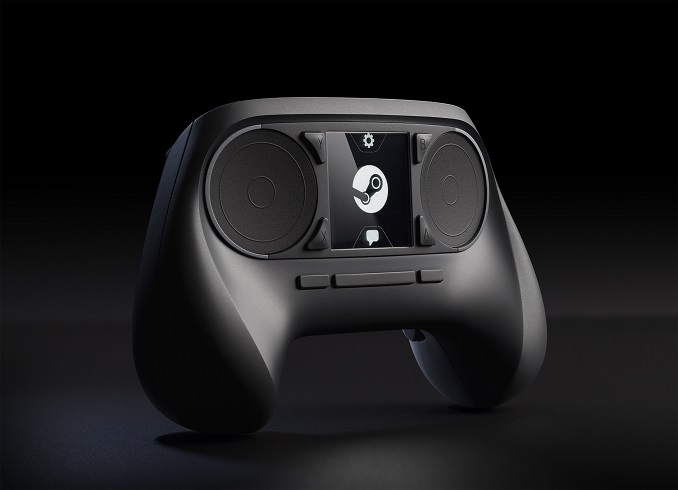


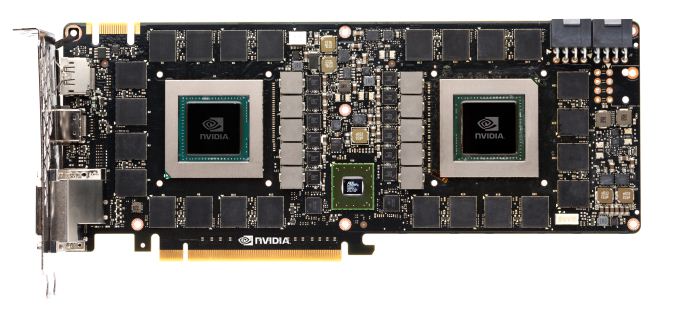
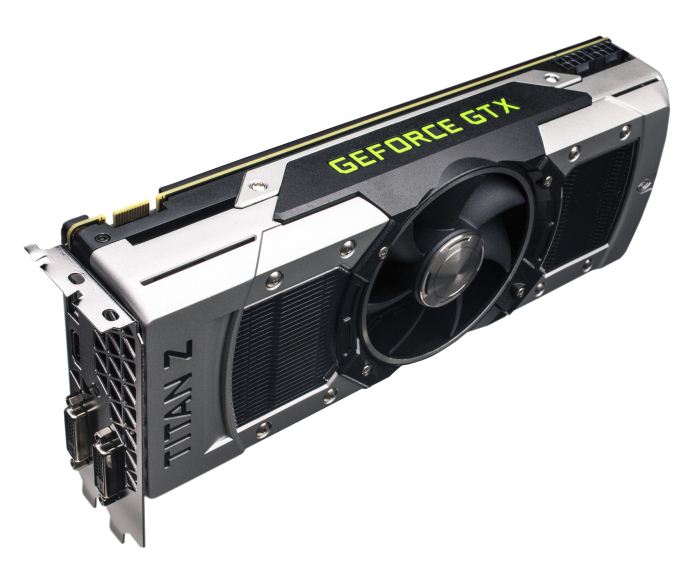
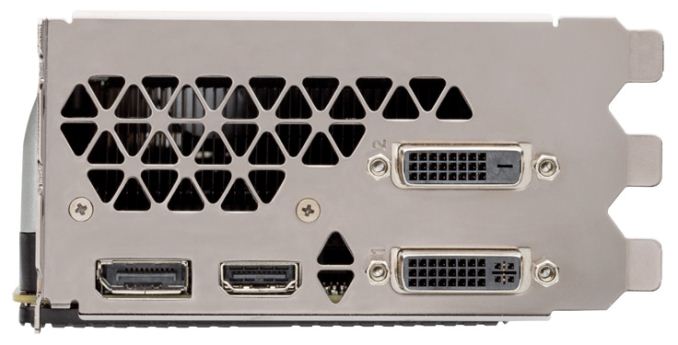
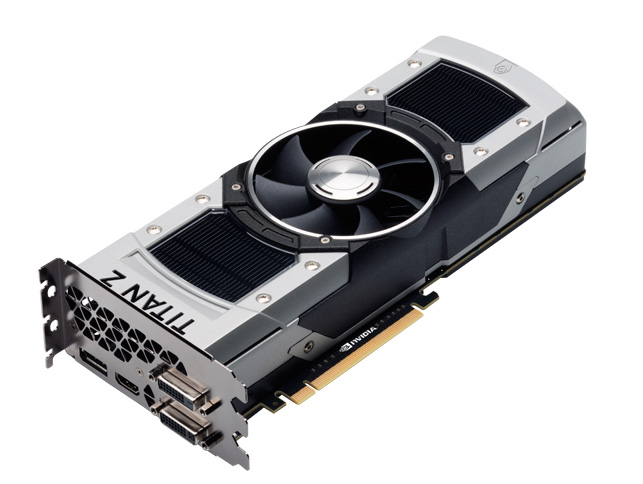



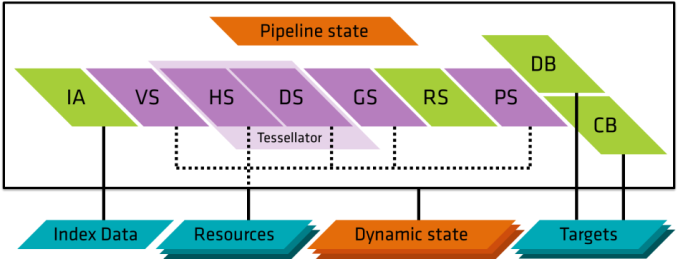


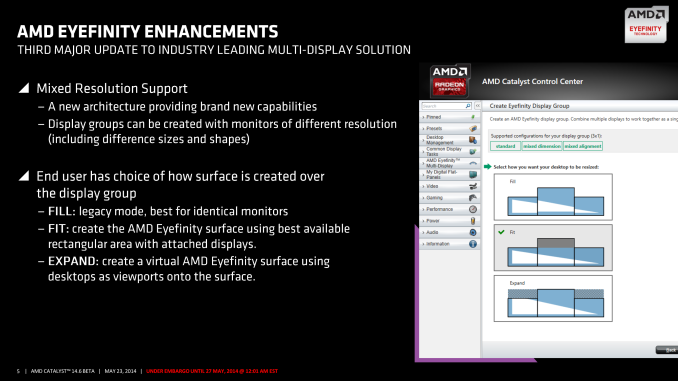
















Bookmarks